Abstract
OBJECTIVE--To assess how early diastolic transmitral flow is suppressed in a group of patients in whom effective ventricular filling occurred exclusively with atrial systole. DESIGN--Prospective examination of the left ventricular transverse and longitudinal axes and transmitral Doppler flow. SETTING--A tertiary referral centre for cardiac diseases. SUBJECTS--20 patients (mean (SD) age 65 (10) years) with isolated transmitral late diastolic flow were studied. None had sinus tachycardia, prolonged PR interval or a summation flow pattern. 21 normal individuals of similar age served as controls. RESULTS--The left ventricle was usually dilated, end diastolic diameter (6.6 (1.0) v 4.9 (0.5) cm, P < 0.001) and end systolic diameter (5.4 (1.1) v 3.3 (0.5) cm, P < 0.001) were both increased, and fractional shortening of the minor axis reduced (16 (7)% v 30 (10)%, P < 0.001) in patients in whom left ventricular early diastolic filling was absent compared with those of normal controls. Mitral valve opening was late after aortic valve closure (A2) (115 (30) v 60 (10) ms, P < 0.001). The minor axis increased during this period (30 (20)% v 8.6 (2.5)%, P < 0.001). Onset of detectable transmitral flow was further delayed after cusp separation (85 (25) v 25 (10) ms, P < 0.001). Left ventricular long axis function was very abnormal. Onset of shortening was delayed with respect to the q wave at the left and septal sites (150 (40) v 90 (20) ms and 145 (30) v 80 (10) ms respectively, P < 0.001) and major shortening occurred after, rather than before, A2 (25 (12) v -10 (2.5)% and 50 (30) v -6.6 (0.3)% total excursion, P < 0.001). Although the long axis lengthened a little at the start of early diastole, its dominant component occurred in late diastole to coincide with atrial systole. The relative A wave was thus greatly increased at both sites (67 (17) v 29 (6)% and 77 (13) v 33 (8)%, P < 0.001). CONCLUSION--Prolonged left ventricular long axis shortening and delayed onset of lengthening effectively suppress early diastolic transmitral flow even though the minor axis increases and mitral cusps separate apparently normally. This grossly asynchronous left ventricular relaxation may interfere with filling by dissipating normal ventricular restoring forces.
Full text
PDF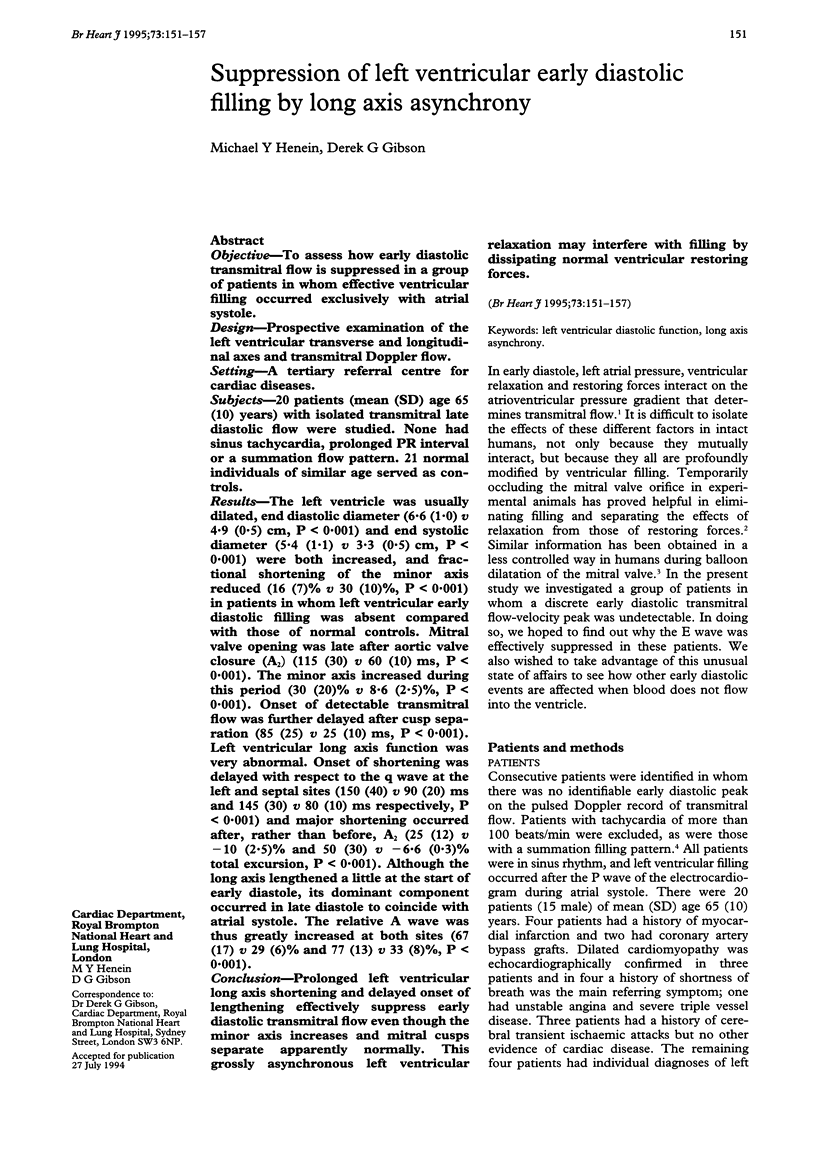
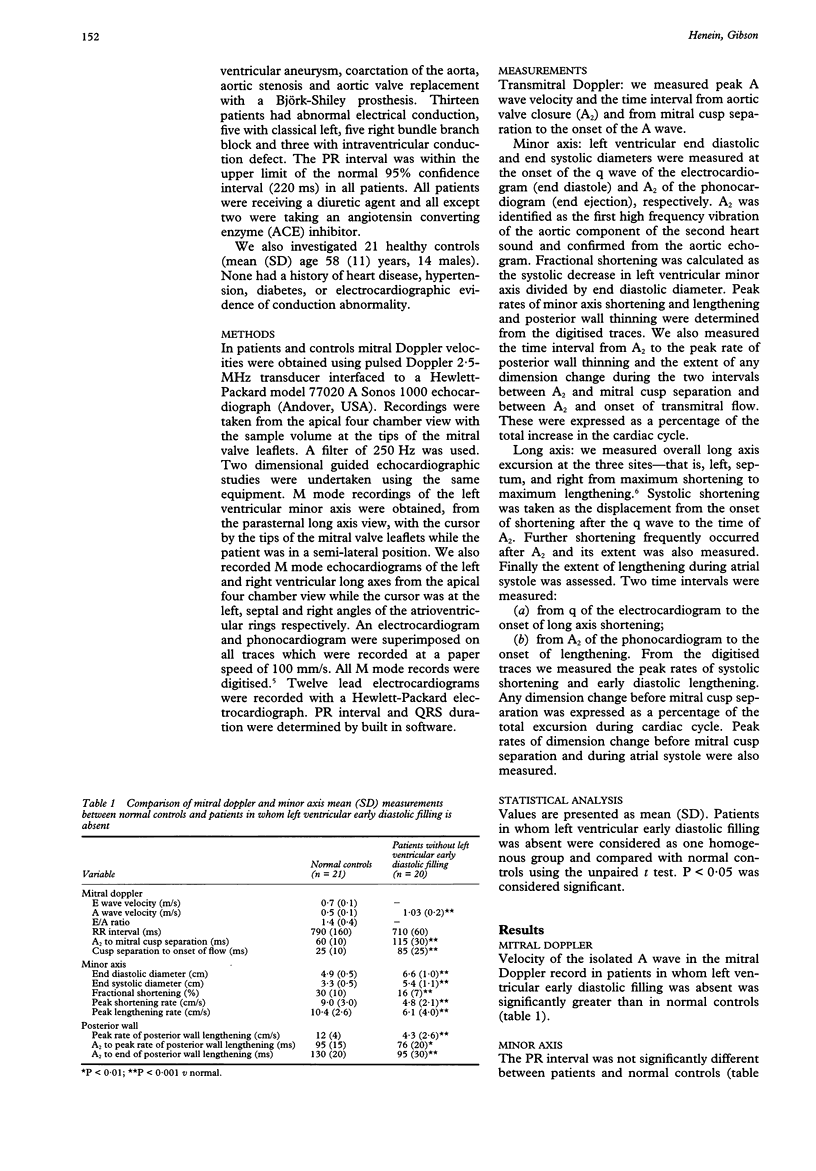
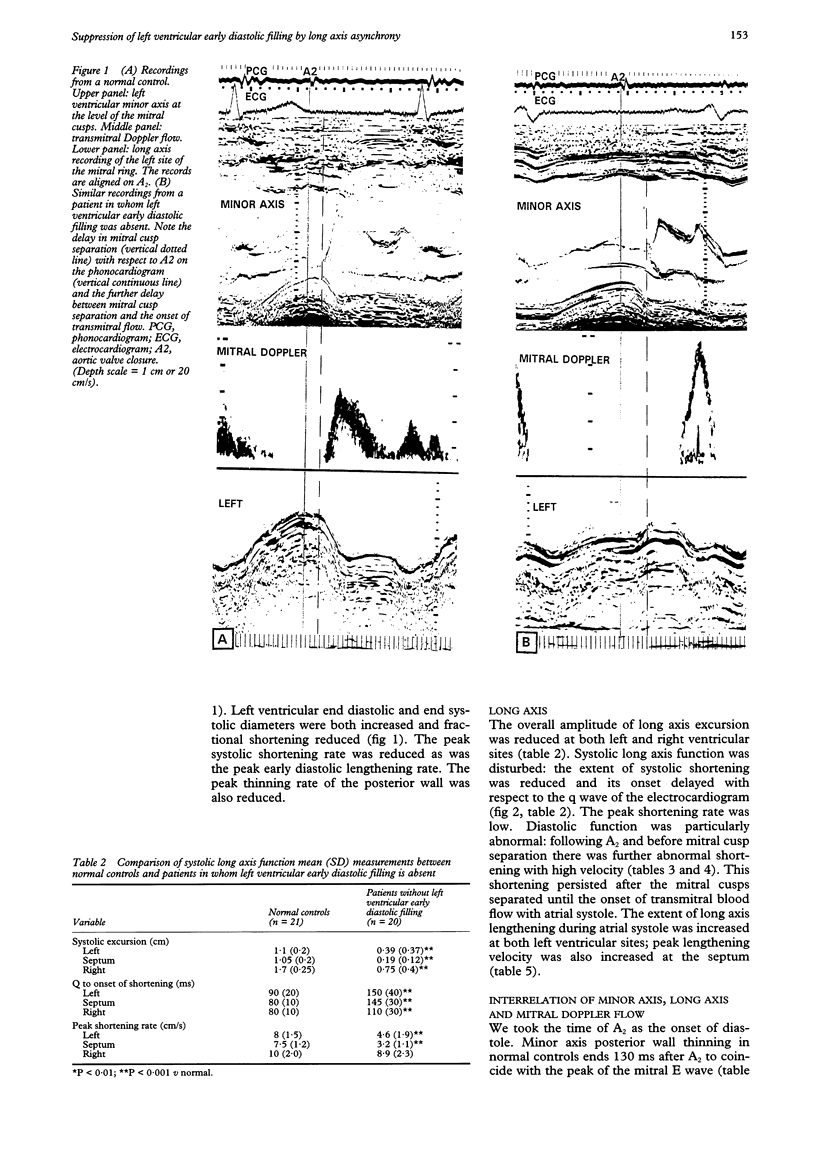
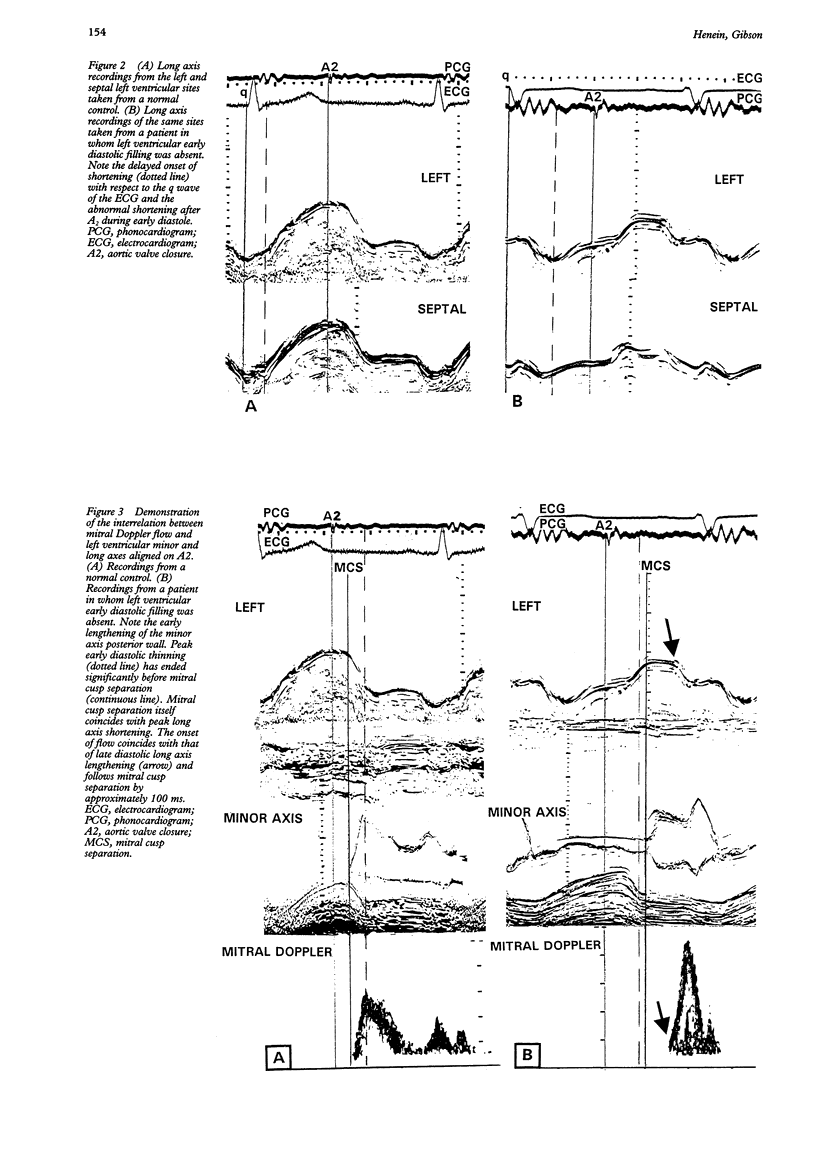
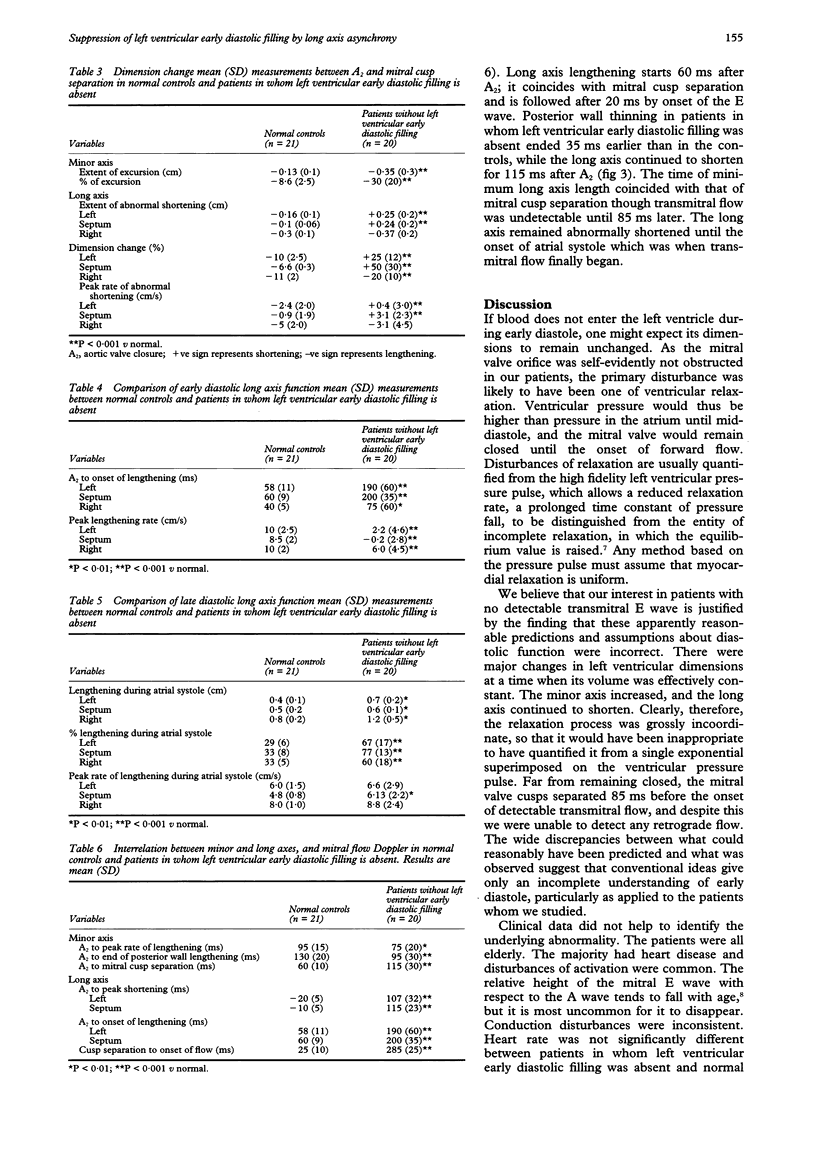
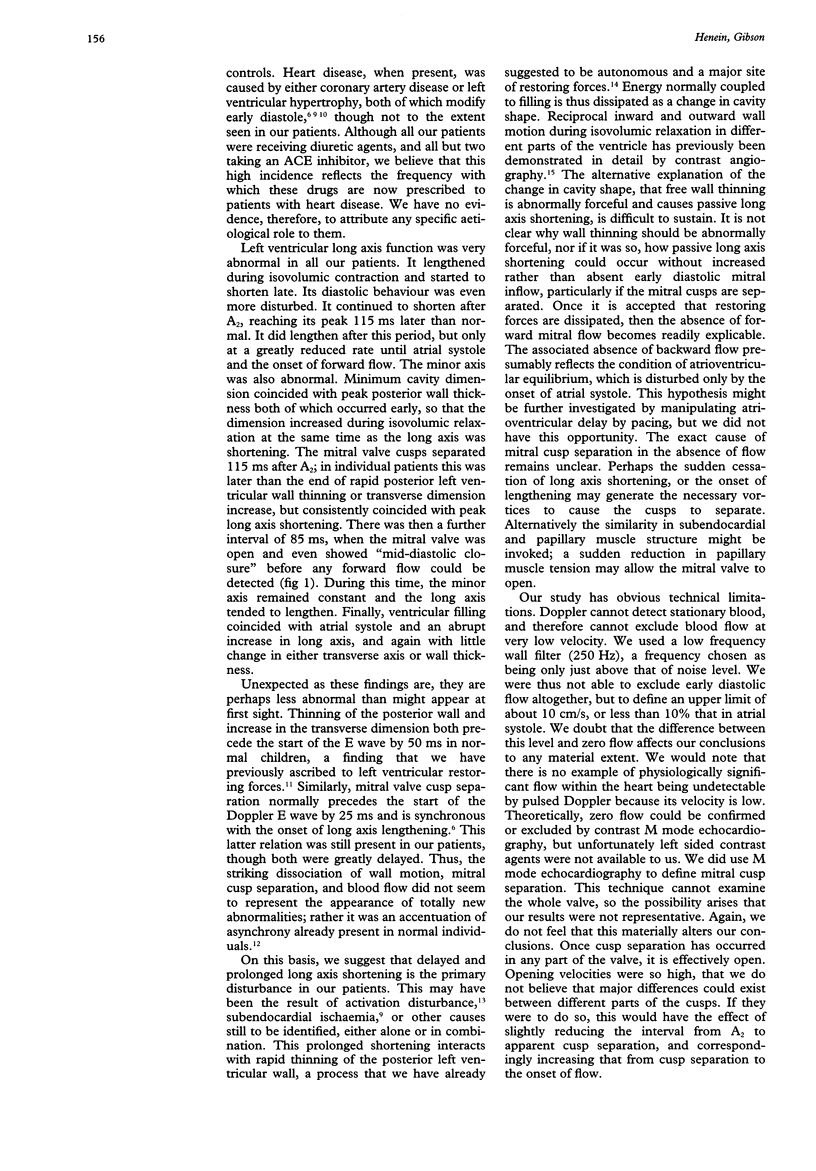
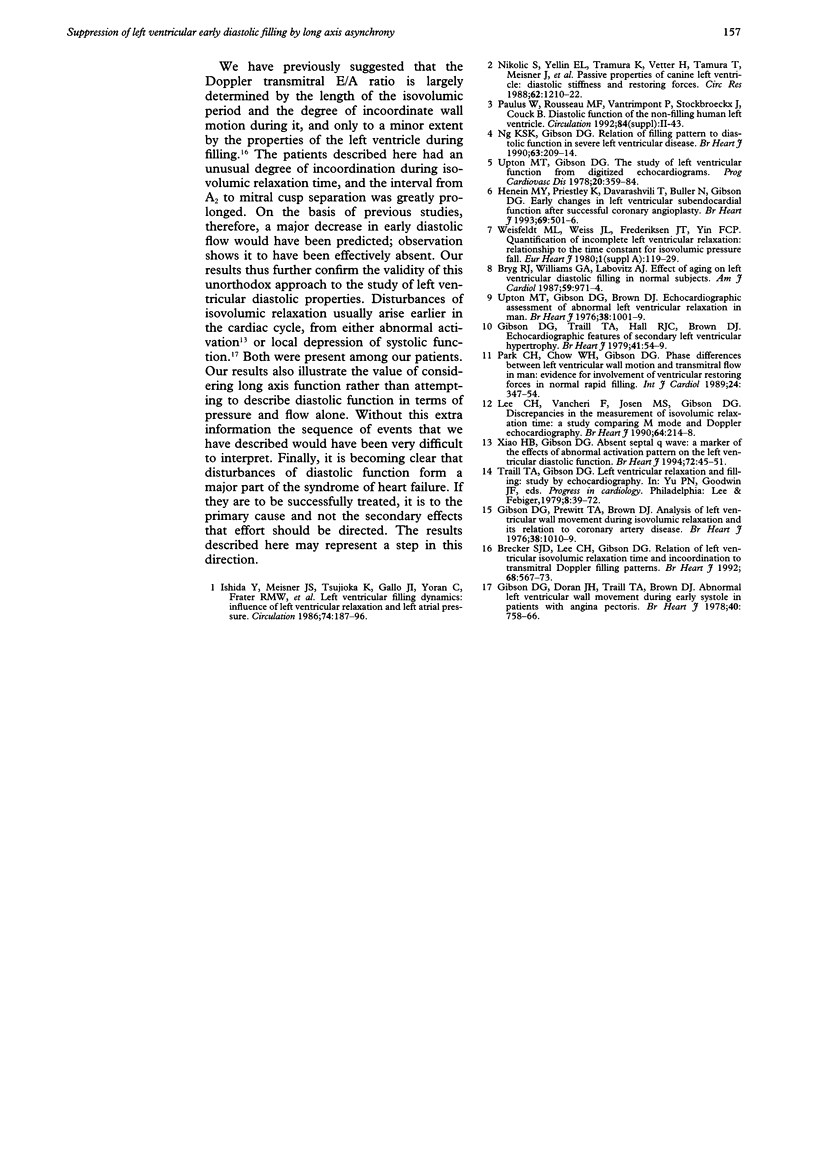
Selected References
These references are in PubMed. This may not be the complete list of references from this article.
- Brecker S. J., Lee C. H., Gibson D. G. Relation of left ventricular isovolumic relaxation time and incoordination to transmitral Doppler filling patterns. Br Heart J. 1992 Dec;68(6):567–573. doi: 10.1136/hrt.68.12.567. [DOI] [PMC free article] [PubMed] [Google Scholar]
- Bryg R. J., Williams G. A., Labovitz A. J. Effect of aging on left ventricular diastolic filling in normal subjects. Am J Cardiol. 1987 Apr 15;59(9):971–974. doi: 10.1016/0002-9149(87)91136-2. [DOI] [PubMed] [Google Scholar]
- Gibson D. G., Doran J. H., Traill T. A., Brown D. J. Abnormal left ventricular wall movement during early systole in patients with angina pectoris. Br Heart J. 1978 Jul;40(7):758–766. doi: 10.1136/hrt.40.7.758. [DOI] [PMC free article] [PubMed] [Google Scholar]
- Gibson D. G., Prewitt T. A., Brown D. J. Analysis of left ventricular wall movement during isovolumic relaxation and its relation to coronary artery disease. Br Heart J. 1976 Oct;38(10):1010–1019. doi: 10.1136/hrt.38.10.1010. [DOI] [PMC free article] [PubMed] [Google Scholar]
- Gibson D. G., Traill T. A., Hall R. J., Brown D. J. Echocardiographic features of secondary left ventricular hypertrophy. Br Heart J. 1979 Jan;41(1):54–59. doi: 10.1136/hrt.41.1.54. [DOI] [PMC free article] [PubMed] [Google Scholar]
- Henein M. Y., Priestley K., Davarashvili T., Buller N., Gibson D. G. Early changes in left ventricular subendocardial function after successful coronary angioplasty. Br Heart J. 1993 Jun;69(6):501–506. doi: 10.1136/hrt.69.6.501. [DOI] [PMC free article] [PubMed] [Google Scholar]
- Ishida Y., Meisner J. S., Tsujioka K., Gallo J. I., Yoran C., Frater R. W., Yellin E. L. Left ventricular filling dynamics: influence of left ventricular relaxation and left atrial pressure. Circulation. 1986 Jul;74(1):187–196. doi: 10.1161/01.cir.74.1.187. [DOI] [PubMed] [Google Scholar]
- Lee C. H., Vancheri F., Josen M. S., Gibson D. G. Discrepancies in the measurement of isovolumic relaxation time: a study comparing M mode and Doppler echocardiography. Br Heart J. 1990 Sep;64(3):214–218. doi: 10.1136/hrt.64.3.214. [DOI] [PMC free article] [PubMed] [Google Scholar]
- New developments in calcium antagonists. VIII European Congress of Cardiology Joint Symposium. 22-26 June, 1980, Paris, France. Eur Heart J. 1980 Dec;1(Suppl B):1–85. [PubMed] [Google Scholar]
- Ng K. S., Gibson D. G. Relation of filling pattern to diastolic function in severe left ventricular disease. Br Heart J. 1990 Apr;63(4):209–214. doi: 10.1136/hrt.63.4.209. [DOI] [PMC free article] [PubMed] [Google Scholar]
- Nikolić S., Yellin E. L., Tamura K., Vetter H., Tamura T., Meisner J. S., Frater R. W. Passive properties of canine left ventricle: diastolic stiffness and restoring forces. Circ Res. 1988 Jun;62(6):1210–1222. doi: 10.1161/01.res.62.6.1210. [DOI] [PubMed] [Google Scholar]
- Park C. H., Chow W. H., Gibson D. G. Phase differences between left ventricular wall motion and transmitral flow in man: evidence for involvement of ventricular restoring forces in normal rapid filling. Int J Cardiol. 1989 Sep;24(3):347–354. doi: 10.1016/0167-5273(89)90014-4. [DOI] [PubMed] [Google Scholar]
- Upton M. T., Gibson D. G., Brown D. J. Echocardiographic assessment of abnormal left ventricular relaxation in man. Br Heart J. 1976 Oct;38(10):1001–1009. doi: 10.1136/hrt.38.10.1001. [DOI] [PMC free article] [PubMed] [Google Scholar]
- Upton M. T., Gibson D. G. The study of left ventricular function from digitized echocardiograms. Prog Cardiovasc Dis. 1978 Mar-Apr;20(5):359–384. doi: 10.1016/0033-0620(78)90003-8. [DOI] [PubMed] [Google Scholar]
- Xiao H. B., Gibson D. G. Absent septal q wave: a marker of the effects of abnormal activation pattern on left ventricular diastolic function. Br Heart J. 1994 Jul;72(1):45–51. doi: 10.1136/hrt.72.1.45. [DOI] [PMC free article] [PubMed] [Google Scholar]


